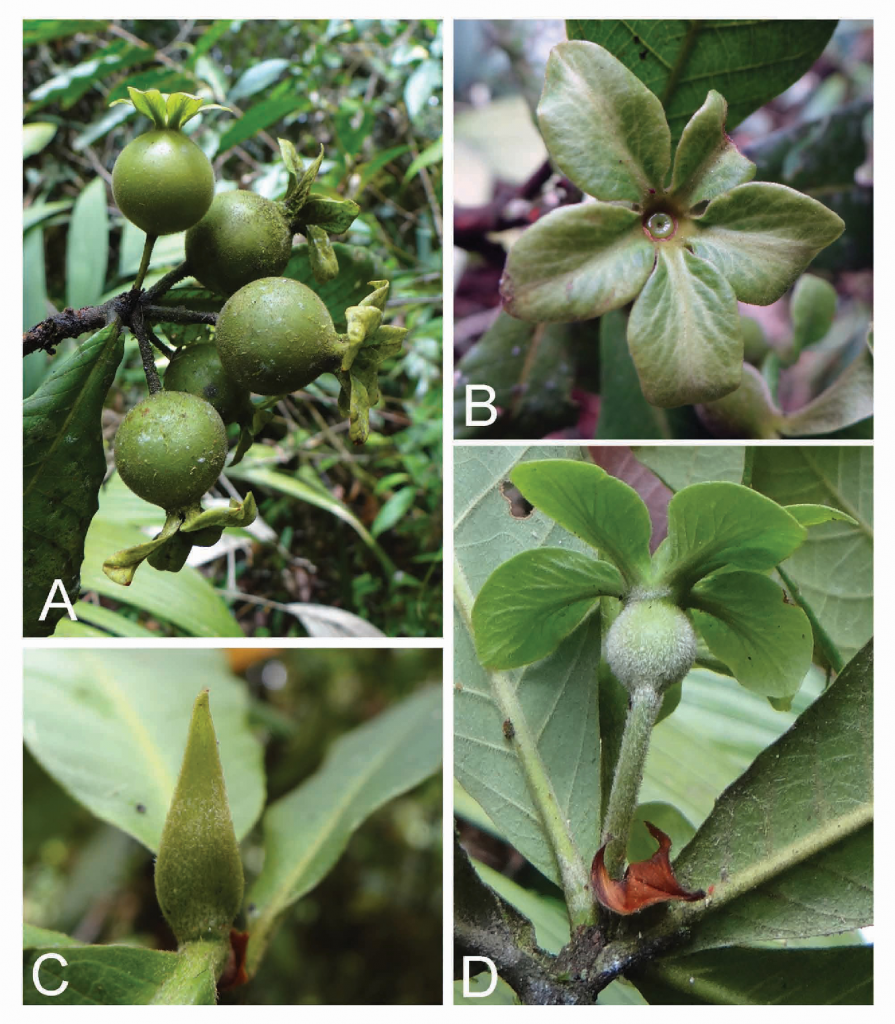- This new species, Amaioua Macrosepala, is found between 1700 and 2080 masl, in the central Andes mountain range. It is easily distinguished from all other species of Amaioua by its amazing leaf-like calyx sepals, from which its name derives.
A new and surprising species of plant, native to the Colombian coffee region, has been described and illustrated for the science: Amaioua Macrosepala, which is differentiated from other species of Amaioua by its leaf-like calyx lobes.
The discovery, by researchers Claes Persson, of the University of Gothenburg, Sweden, and Colombian Enrique Méndez, was made in the Pensilvania municipality, in the department of Caldas, as part of floristic characterization works carried out within the framework of the KfW Program.
This program, for the conservation of forests and sustainable forest production, is a joint initiative by the Colombian Coffee Growers Federation (FNC) and the German governmental development bank KfW.
This confirms not only the very high biodiversity in the Colombian coffee region, but the importance of further research to learn about it, better understand it, and preserve it.
“The discovery stresses the importance of protecting the forests in the coffee regions of Colombia,” Persson said via e-mail.
“Despite everything we know, in the forests of the coffee region there are still species that we have not identified and surely, like this one, there are many more to be discovered. That confirms the importance of all the efforts made to conserve these ecosystems,” Raúl Jaime Hernández, coordinator of the FNC Environmental Program, said.
Amaioua is a small neotropical genus of trees and treelets ranging from Mexico and Cuba to southern Brazil (state of Santa Catarina); it is closely related to the genus Duroia; the frontiers between these two are somewhat unclear.
In contrast, the new species discovered and described is readily distinguished from all other Amaioua by its globose fruits with persistent leaf-like calyx lobes.

It is between 2 and 5 m tall, with large, opposite leaves. The infructescence is a cyme or umbel-like cyme with 3 to 5 fruits, rarely solitary, globose, puberulent, green when fresh, brown when dry, and crowned by the characteristic persistent calyx of five elliptical leaf-like lobes. It contains a number of lenticular seeds, among other features described.
As to distribution and habitat, Amaioua macrosepala is endemic to the central mountain range of the Colombian Andes, where it lives in the cloud forest understory at 1700 to 2080 masl.
According to the 2010 Red List of the International Union for Conservation of Nature (IUCN), Amaioua macrosepala is considered endangered, because of a severely fragmented habitat or existing at no more than five locations, being found only in two sites not subject to conservation.
As to its etymology, the specific epithet of this species refers to the large leaf-like calyx lobes that are fused at the base.

